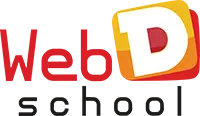Web D School
Key Terms
A quick-reference guide to key terms and definitions you need to know.
A
A set of rules that allows software programs to communicate with each other.
Any media element used in a design or website (images, icons, videos, etc.).
B
The server-side part of a website or application, handling data, logic, and database interactions.
The percentage of visitors who leave a site after viewing only one page.
C
Software used to create, manage, and modify digital content (e.g., WordPress).
A stylesheet language used to style the appearance of HTML elements.
D
The process of identifying and fixing errors or bugs in code.
The web address (URL) that users type into a browser to visit a website.
F
The part of a website that users interact with directly—includes HTML, CSS, and JavaScript.
A pre-written code base or structure used to develop applications faster and more efficiently (e.g., Bootstrap, React).
G
A structure used in design and layout to align elements consistently and proportionally.
H
The standard language for creating the structure of web pages.
A large, prominent image placed at the top of a website’s homepage or landing page.
I
Designing systems that allow users to interact with the interface dynamically.
The process of refining a design or code through repeated testing and feedback.
J
A programming language used to make web pages interactive and dynamic.
K
A word or phrase that users type into search engines; used in SEO strategies to improve ranking.
L
A standalone web page created for marketing campaigns to drive conversions or leads.
A symbol or design representing a brand's identity.
M
A high-fidelity visual representation of a design or webpage.
Data that provides information about other data (e.g., title, description for SEO).
N
A set of links or buttons that help users navigate through different sections of a website.
P
An interactive simulation or early sample of a product used to test functionality and design.
The smallest unit of a digital image or display.
R
Designing websites to automatically adjust layout across different screen sizes and devices.
S
Techniques used to improve a website’s visibility on search engines.
A slideshow component for cycling through images or content.
T
The art and technique of arranging type to make written content legible and appealing.
U
The visual elements through which a user interacts with a system.
The overall experience and satisfaction a user has with a product or service.
V
Graphics based on mathematical expressions, scalable without losing quality (e.g., SVG).
The visible area of a webpage on a device screen.
W
A basic, low-fidelity layout used to plan the structure of a webpage.
A sequence of steps involved in a creative or development process.

